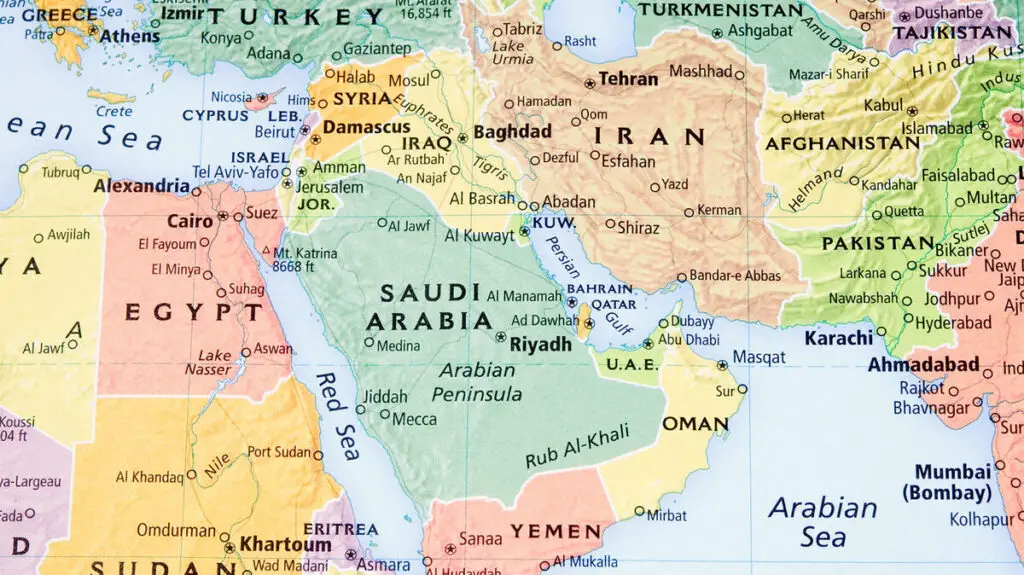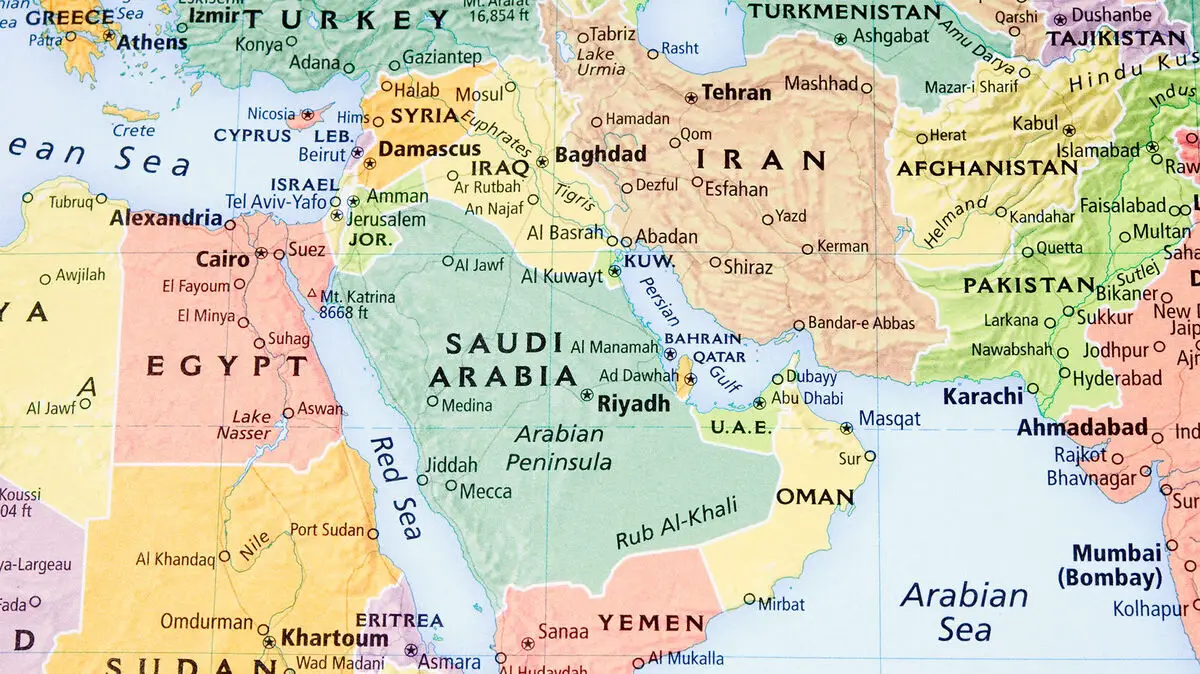The Middle East has long been an area of immense geopolitical importance. It is a place in which power dynamics have shaped the development of the world. Through the years, a variety of major players have emerged impacting the region’s political landscape and economics as well as security. In recent years the power dynamics of the Middle East have been undergoing an important shift, fueled by a mix of external and internal influences. This article seeks to dive into the changing world of power in Middle East, analyze the important roles played by key players and analyze the ramifications of these changes.
Introduction
The Middle East holds immense strategic significance due to its huge energy resources, its historical importance, and its location as a point of intersection between continents. Understanding the dynamic of power in the region is essential to understand the global security and politics. In the past few years these dynamics have seen significant changes that has challenged the established power structures and bringing new players into the game.
Historical background of power dynamics in the Middle East
To comprehend the present power dynamics, it’s important to study their historical background. For many centuries this region Middle East has been home to powerful empires such as the Ottomans Safavids and Ottomans as well as the Mamluks. These empires exerted a significant influence on the region, and shaped its cultural and political landscape.
In the contemporary time, the discovery massive petroleum reserves within the Middle East further intensified its geopolitical importance. Western powers, including those of the United States and European nations have formed powerful alliances and exercised a significant influence to protect their energy interests and ensure the stability of the region.
New power dynamics

The rise to new dynamic power relations across the Middle East can be attributed to a variety of factors. One of them is the ongoing struggle for power among Saudi Arabia and Iran. Both countries fight for influence and dominance and often use proxy wars to further their goals.
In addition it is worth noting that also, the United Arab Emirates (UAE) has emerged as an economic powerhouse and has leveraged its resources to increase its influence as a soft power in the region. The Strategic partnerships and investments made by the UAE have helped shape regional trends in areas like tourism, trade as well as infrastructure development.
Turkey under the presidency of President Recep Tayyip Erdoan, has pursued a strong foreign policy that has expanded its influence far beyond its boundaries. The involvement of Turkey in conflict areas such as Syria and Libya as well as its regional ambitions, have significantly altered the dynamics of power within the Middle East.
Israel although historically a major actor in the region, has seen shifting alliances and developing relationships with neighbouring countries. Relations normalization with some Arab states has altered the dynamics of the region and opened new opportunities for cooperation.
Saudi Arabia: Rising influence and the challenges
Saudi Arabia, with its huge oil reserves and the custodianship of Islamic holy sites, has always had a prominent position throughout the Middle East. However, the country faces numerous challenges as it seeks for influence within the region. Saudi Vision 2030, an ambitious plan Saudi Vision 2030 aims to diversify the economy while reducing dependency on petroleum, however its effectiveness is undetermined. In addition, Saudi Arabia’s participation within Yemeni conflict has drawn criticism. Yemeni conflict has sparked criticism and caused tensions with certain regional actors.
Iran The region’s goals and power
Iran is a country with a significant history and geopolitical significance aspirs to be an influential regional power. The pursuit of nuclear power, its support for proxy groups, as well as its influence over Iraq, Lebanon, and Syria are causing conflict between Saudi Arabia and other Gulf states. The actions of Iran have raised questions between its neighbors and regional powers, threatening the current equilibrium of power.
United Arab Emirates: Soft influence and economic power
The United Arab Emirates has emerged as a major force in the economy within the Middle East. With its investments, the UAE has become a major hub for commerce, finance, and tourism. Through the use of its economic power as well as its infrastructure, the UAE has developed relations with various players in the region and is engaged in efforts to influence the agenda for regional cooperation.
Turkey is expanding its influence in the region
Under the leadership of President Erdogan, Turkey has pursued an ambitious foreign policy plan that aims to broaden its influence within its influence in the Middle East. Its participation in Syria as well as its aid to Islamist groups, and disagreements about maritime borders have increased tensions with its neighbors and questioned the power relations.
Israel and the shifting relationships and dynamics in the region
Israel’s relationship with its neighbouring countries have undergone significant shifts in the last few time. The gradual normalization of relations between certain Arab states, including Bahrain, the United Arab Emirates and Bahrain has marked a pivotal moment in the regional dynamics. Israel’s involvement in the Israeli-Palestinian war and its policy towards security in the region, and its technological advancements continue determine the dynamics of power in the Middle East.
United States: Changing roles and interests
The United States has long played an important part within the Middle East, primarily driven by its interest in maintaining the stability of the region and protecting energy resources. In recent times it has become apparent that the U.S. has adopted a more nuanced approach, removing itself from certain conflicts, and reevaluating its alliances. The balance between relationships with its traditional allies like Saudi Arabia, while also working with other regional actors, is a major challenge that is a challenge for U.S. policymakers.
Russia is a emerging player within the Middle East
Russia’s growing involvement with its involvement in Middle East has altered the regional power dynamics. In assisting Syria’s Assad regime of Syria, Russia has secured a position of strategic importance in the region and boosted its influence. The Russians’ engagement to other players from the region which includes Egypt and Iran is further strengthening its status as a major actor within the Middle East.
China Interests in the economy and increasing presence
China’s interests in the economy and its growing influence in the Middle East have garnered attention from world-wide observers. As part of their Belt and Road Initiative, China has invested a lot of money in infrastructure projects throughout the region, and has secured access to essential resources and markets. This investment in economics can have political consequences, reversing conventional power structures and influencing the regional landscape.
Effect on regional instability and conflicts
The dynamic shifts in power that are taking place in the Middle East have had a major influence on regional conflicts as well as stability. Conflicts between proxy wars, sectarian tensions along with regional rivalries, have gotten more intense as major players exert their influence and compete for supremacy. The power struggle among Saudi Arabia and Iran, for example, have intensified conflict within Yemen, Iraq, and Syria which have led to crisis in the humanitarian sector and instability in the political landscape.
Opportunities and challenges for important players
Every key participant within the Middle East faces a unique set of opportunities and challenges. Internal issues, like social and economic disparities, political shifts as well as security threats are significant barriers to their ambitions in the region. External pressures, such as global trends, international relations and technological advances influence the possibilities and challenges that these actors face.
Future perspectives and its implications
The future of the power dynamics in the Middle East remains uncertain and complicated. New players are emerging the established power structures change and geopolitical dynamics change. The ongoing conflict as well as regional rivalries and the changing global order will certainly affect the direction for power dynamics in the Middle East and have implications for the wider international community.
Conclusion
The Middle East is witnessing a transformational period marked by shifting power dynamics as well as the appearance of new actors. Saudi Arabia, Iran, the United Arab Emirates, Turkey, Israel, the United States, Russia, and China are the key players who are shaping the landscape of the region. Understanding their role, ambitions and actions is essential in understanding the complexities in the Middle East and its implications for security and global politics. As power shifts the Middle East faces challenges as well as opportunities that will define the future direction of the Middle East.
FAQs
1. What are the dynamics of power across the Middle East?
The power dynamics in the Middle East are changing due to a mix of factors, such as the appearance from new actors, rivalries within the region and the shifting of alliances. The traditional power structures are under threat as are new centers of power emerging to gain importance.
2. What is the role that Saudi Arabia play in the changing the power dynamic?
Saudi Arabia has traditionally been a key participant within the Middle East due to its huge oil reserves as well as its the significance of its religion. But the kingdom is facing difficulties in maintaining its power and influence, especially in the midst of regional conflict and domestic changes brought on through Saudi Vision 2030.
3. What is the way Iran affect the dynamics of power of the Middle East?
Iran seeks to establish its dominance in the region through a variety of ways such as assistance to proxy groups and involvement in conflict. The actions of Iran have caused tensions with its rival Saudi Arabia and other Gulf states, which contribute to shift in power dynamics within the region.
4. What are the implications of what is the impact of United Arab Emirates’ economic influence on the Middle East?
The United Arab Emirates has become a major economic power within the Middle East, leveraging its resources to increase its influence through soft power. Through strategic partnerships and investments through strategic partnerships and investments, the UAE influences regional dynamics, such as tourism, trade and infrastructure development.
5. How will what the United States’ changing role influence the dynamics of power in the Middle East?
The United States has reviewed its position as a player in its role in the Middle East, balancing alliances with traditional partners as well as engaging with other regional actors. This change in strategy will have consequences for power dynamics since this shift in strategy will affect power dynamics as the U.S. recalibrates its interests and priorities within the region.
The Future Flashpoints: Analyzing Potential Scenarios for World War III

[…] The Shifting Power Dynamics in the Middle East: Analyzing the Role of Key Players […]
[…] making remarkable progress in the realm of geopolitics, particularly in the strategically important Middle East. The country is known for its rich historical and cultural heritage as well as its economic […]